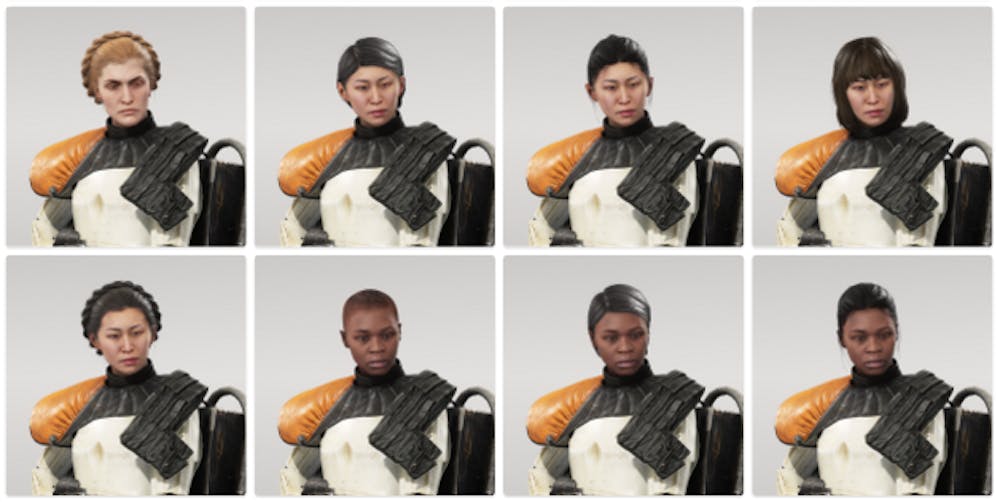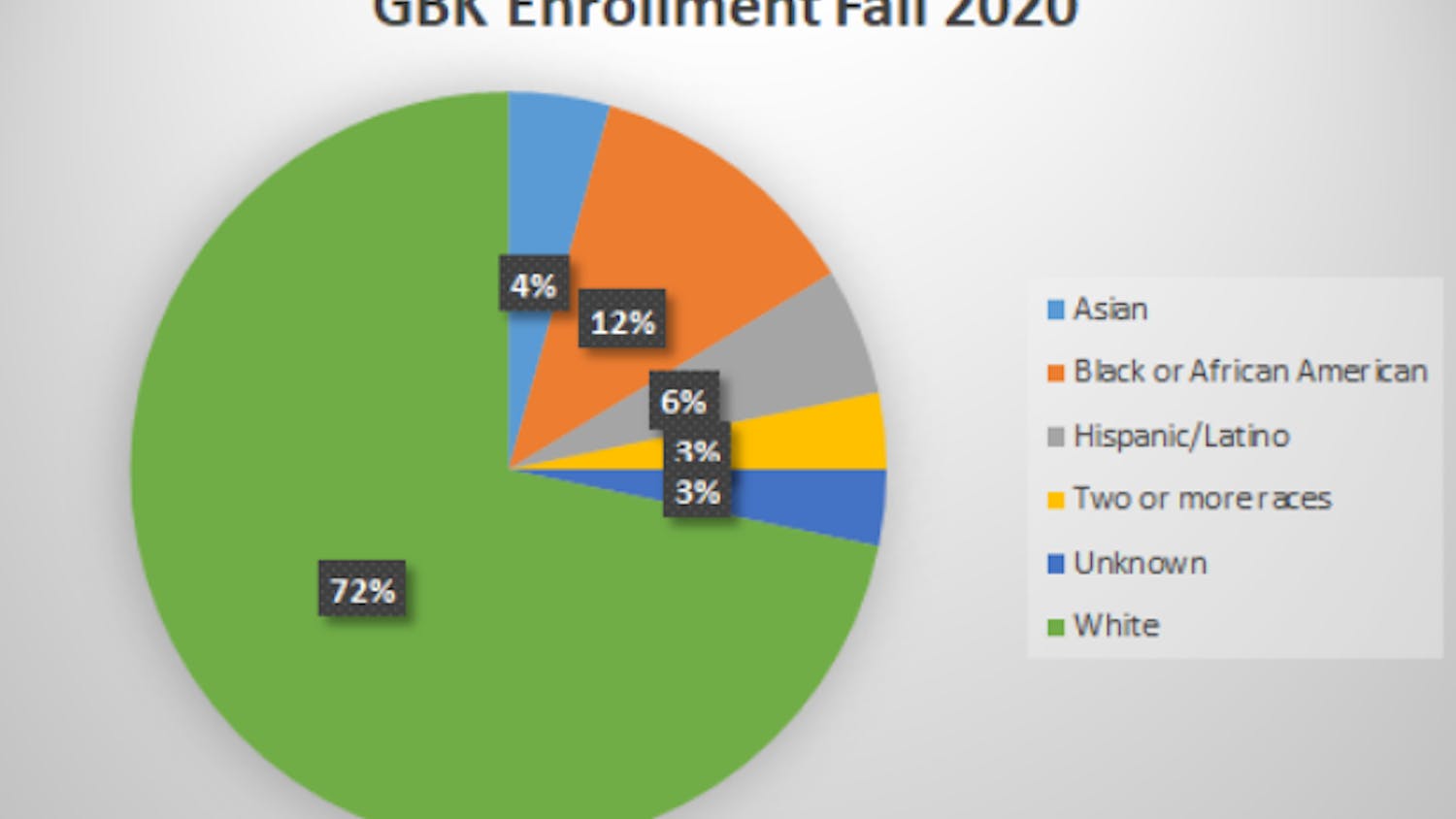A bias towards white male characters is a well-documented reality in the mainstream video game industry. The all-too-common perception among executives at game publishing companies, such as Activision and Ubisoft, — that games featuring characters outside of the majority don’t sell — is reminiscent of the only-boys-buy-toys attitude that has long dominated children’s cartoon production.
In other words, your standard game hero is a middle-aged white guy with short dark hair and a gun, and he is everywhere. From “Doom” in 1993 to “Grand Theft Auto” in 2003 to “Bioshock” in 2013, the overwhelming majority of high-profile gaming heroes follow this model. Sprinkle some “Resident Evil,” “Uncharted” or “Call of Duty” in between as you like, and be sure to market your build-your-own-hero game with similar poster characters à la “Mass Effect,” “Saints Row,” or the just-released “Fallout 4.”
In 2007, the project that eventually led to 2012’s “Sleeping Dogs” by way of the shuttered “True Crime” franchise was reportedly forced by Activision to change its hero from a woman to a man. The reason? A chick can’t be a renegade cop — nobody would want to buy that.
Meanwhile, when Dontnod Entertainment’s 2013 game “Remember Me” was infamously turned down repeatedly by publishers on the basis of its female protagonist, they publicly stood by their heroine to the media:
[pullquote speaker="Jean-Max Morris" photo="" align="left" background="on" border="all" shadow="on"]Well, we don’t want to publish it because that’s not going to succeed. You can’t have a female character in games. It has to be a male character, simple as that[/pullquote]
“We had some [publishers] that said, ‘Well, we don’t want to publish it because that’s not going to succeed. You can’t have a female character in games. It has to be a male character, simple as that,’” the game’s creative director, Jean-Max Morris, said in an interview with Penny Arcade at the time.
Later that same year, the legendary Lara Croft of “Tomb Raider” fame made her reboot debut and likewise helped reboot the debate on feminism in video games in the wake of “Remember Me.” The new-and-improved Lara was well-received and moved enough copies to warrant a sequel, which also just launched this month, but she still stands in the company of few.
Gender is but one part of the multi-sided coin, and — racial minorities suffer from even less representation — even international releases from Japan, such as “Metal Gear” and “Mario,” tend to feature white characters. It’s here that I would like to point towards a little old franchise that’s been getting quite a bit of attention lately: “Star Wars.”
I don’t plan on touching the #BoycottStarWarsVII mess with a ten-foot lightsaber — you can look that up on your own. Rather, I’d like to highlight and shout to the heavens the magnificent effort that is the “Star Wars: Battlefront” reboot, just released on Nov. 17.
Context: “Star Wars: Battlefront,” a fan favorite that’s been missing in action for a decade since the acclaimed 2005 release of “Battlefront II,” is quite possibly the most anticipated game of the year, vying against the likes of “Fallout 4” for press attention and holiday dollars. It’s also being made by Swedish developer Digital Illusions Creative Entertainment (DICE), best known for their “Battlefield” franchise, a series of multiplayer army shooters after which LucasArts modeled the original “Battlefront” games.
My own opinion of their latest efforts aside, DICE is known for making good video games. What they are not known for is making a diverse cast of characters. Almost every single one of their past titles involve historical or hypothetical real-world clashes of first-world armies, and the soldiers that populate their games reflect it.
A consistent cast of a bunch of white guys and one black dude can be chalked up to a degree of “realism”; even today in the US, after the lift of the ban on combat roles for women, there are essentially no female “foot grunts,” and white and black soldiers together make up 95 percent of the U.S. Army. However, Russia, a favorite country to feature in DICE’s games, does allow for female foot soldiers, and indeed they make up 10 percent of Russia’s troops. Yet across five games that feature the Russian army (“Battlefield” 2-4 and the two “Bad Company” spin offs), exactly zero include female player-characters.

With the new “Star Wars” game, however, this tradition has been thrown on its head. “Battlefront” offers not only both male and female player-characters to use online but also black, white, East Asian and other uncommon ethnic variants of said characters. Even age representation is diverse with the young to the 60-somethings all making their appearances as rebel volunteers and Imperial conscripts. Players hear both male and female officers on the radio directing the battle, and even the masked Imperial stormtroopers get the gender treatment — which is apparently a real thing in “Star Wars” that has, to my knowledge, never before been portrayed in an official movie or game.
The real kicker, though, is the clothing all of these characters wear. Rebel soldiers and Imperial troopers alike are all kitted with the same gear regardless of gender. Nowhere to be found are the special lightweight slim-waist wide-hips breast-highlighting armor and uniforms that plague the heroines of so many other titles. You know what I’m talking about.
The game not being released yet, all of these observations are from my experience in the open beta test back in October. The exact implementation of these features may be subject to change in the release as some features were disabled in the beta. Still, before now, I wasn’t sure whether I wanted to get this game. I’ve become very disenfranchised with DICE’s work as of late and was worried that “Battlefront” would end up in the “skip it” bin like their other recent efforts. However, whether or not I actually liked the game play in the beta (I did), this game has now already been automatically added to my purchase list. This is a trend I want to support.
Some reviewers around the net, such as Forbes’ Jason Evangelho and the Escapist’s Steven Bogos, seem to have already tossed it in for everyone except the most hardcore “Star Wars” fans.
However, whether or not I like DICE’s general handiwork (not really), whether I enjoyed the game play in the beta (I did), and whether or not the full release is being well-received (dubious), “Star Wars: Battlefront” has been automatically added to my purchase list. Game of the year or not, the work that went into representing the traditionally unrepresented is a trend I want to support.
I’d like to exit with this exchange on the official “Star Wars” Facebook page regarding the lack of gendered armor. Video game industry, give us more of this, please.
A new hope for inclusiveness in gaming

With 73 customizations for the Rebel faction and 51 customizations for the Imperial faction, “Star Wars Battlefront” features a wide variety of appearances for your character.
This comment and reply was featured on the official “Star Wars” Facebook page. It has been floating around the Internet along with the topic for inclusive
video game characters.




